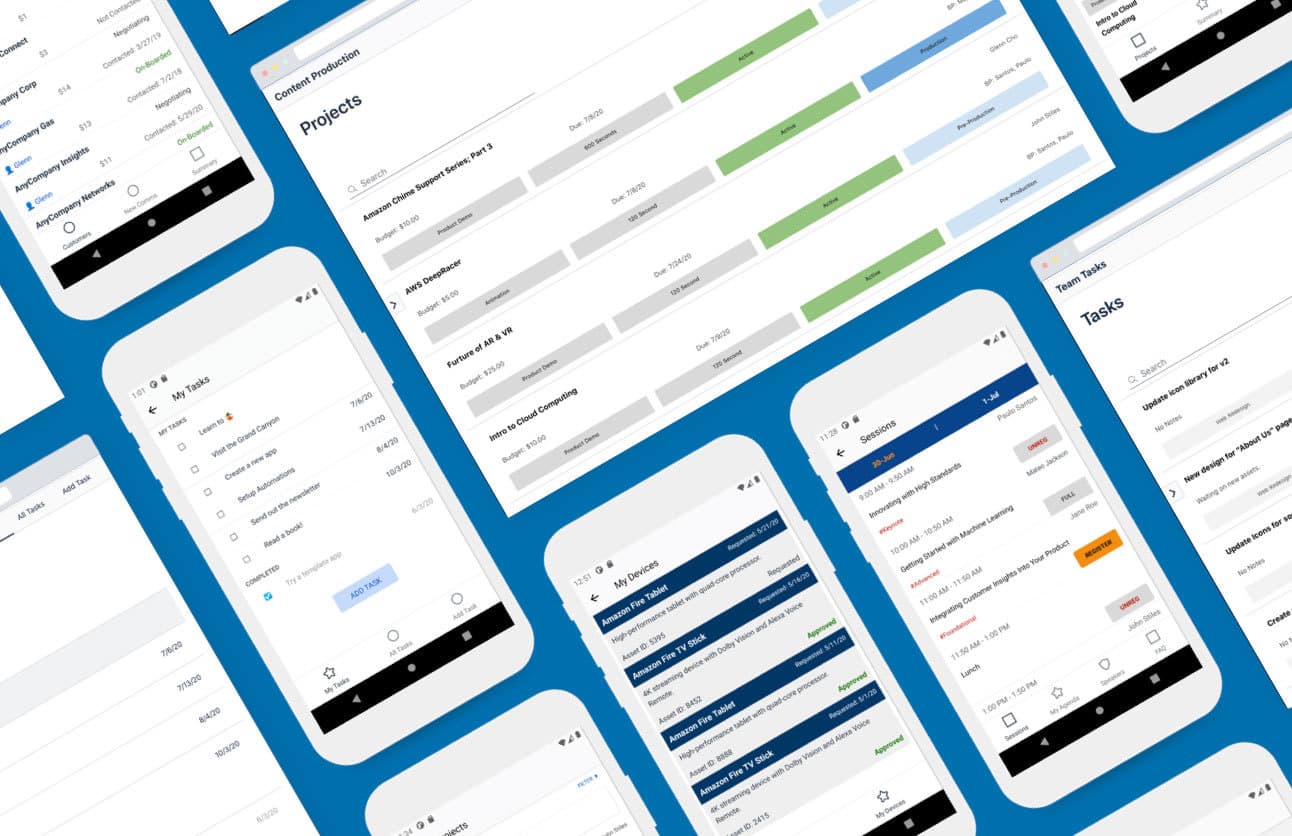The News: Amazon Web Services, Inc. (AWS), an Amazon.com company (NASDAQ:AMZN), last Friday, announced Amazon Honeycode, a fully managed service that allows customers to quickly build powerful mobile and web applications – with no programming required. Customers who need applications to track and manage things like process approvals, event scheduling, customer relationship management, user surveys, to-do lists, and content and inventory tracking no longer need to do so by error-prone methods like emailing spreadsheets or documents, or hiring and waiting for developers to build costly custom applications. Customers can get started creating applications in minutes, build applications with up to 20 users for free, and only pay for the users and storage for larger applications. To get started with Amazon Honeycode, visit http://honeycode.aws.
Analyst Take: If there is one real positive outcome from the Covid-19 pandemic, it has been the expeditious nature of business and tech to speed innovation and drive new solutions into market in shorter periods. I believe we have seen, in some cases, nearly a decade worth of innovation happen in a matter of a few months. We can thank SaaS, Collaboration Tools, The Cloud, Big Data and other top digital transformation trends for playing a key role in enabling such ingenuity.
One of the movements I have been tracking closely has been the development of Low Code/No Code offerings. Over the past year, we have seen this movement evolve from specialty vendors like OutSystems to staples of big tech and hyperscale cloud providers such as Google (AppSheet) and Microsoft Power Apps. The decision by big tech to pick up investment in these solutions is timely as business processes that are being run using stodgy old spreadsheets and documents are desperately in need of a face lift and empowering line of business professionals that are solid in Excel or Sheets is a great way to turn old ways into new apps.
AWS Honeycode Seeks to Enable Its Users
I believe the thinking for AWS is pretty simple. Combine its massive user base with a ready to use tool that can take business processes and AWS database capabilities and turn it into applications quickly without developer skills required. This includes web apps and mobile apps and some examples of its use can be tracking data over time and notifying users of changes, routing approvals, and facilitating interactive business processes. And despite its positioning as being No Code, customers should be able to create more than just simple applications, but also more complex applications that can track important tasks or manage projects and workflows across an organization.
While I’m not suggesting that users of other Low Code or No Code platforms are going to just jump ship and run to AWS, I do believe AWS has a large customer base to work off of to develop adoption and scale from there.
Overall Impressions of the Honeycode Launch by AWS
This launch wasn’t an if, but a when. For AWS, it was important that the platforms broad swath of users have the ability to develop applications like those Honeycode is well designed for without having to seek other tools and software. Sure, this may not bode well for the best in breed article, but we have to recognize that the competitive nature of the clouds is growing and this means more crossover. For AWS, I have long said its growth will need to move deeper into the SaaS and Productivity application layers–This represents an important start and I expect it to be met with positivity from its user base, but it won’t a zero sum game as competition will keep all the players in low code/no code innovating quickly and meaningfully.
Futurum Research provides industry research and analysis. These columns are for educational purposes only and should not be considered in any way investment advice.
Read more analysis from Futurum Research:
Rumors Emerge of Dell Expanding Ownership or Spinning Off VMware?
HPE Turns to Containers With Its Ezmeral Software
Image Credit: HPE
Author Information
Daniel is the CEO of The Futurum Group. Living his life at the intersection of people and technology, Daniel works with the world’s largest technology brands exploring Digital Transformation and how it is influencing the enterprise.
From the leading edge of AI to global technology policy, Daniel makes the connections between business, people and tech that are required for companies to benefit most from their technology investments. Daniel is a top 5 globally ranked industry analyst and his ideas are regularly cited or shared in television appearances by CNBC, Bloomberg, Wall Street Journal and hundreds of other sites around the world.
A 7x Best-Selling Author including his most recent book “Human/Machine.” Daniel is also a Forbes and MarketWatch (Dow Jones) contributor.
An MBA and Former Graduate Adjunct Faculty, Daniel is an Austin Texas transplant after 40 years in Chicago. His speaking takes him around the world each year as he shares his vision of the role technology will play in our future.







